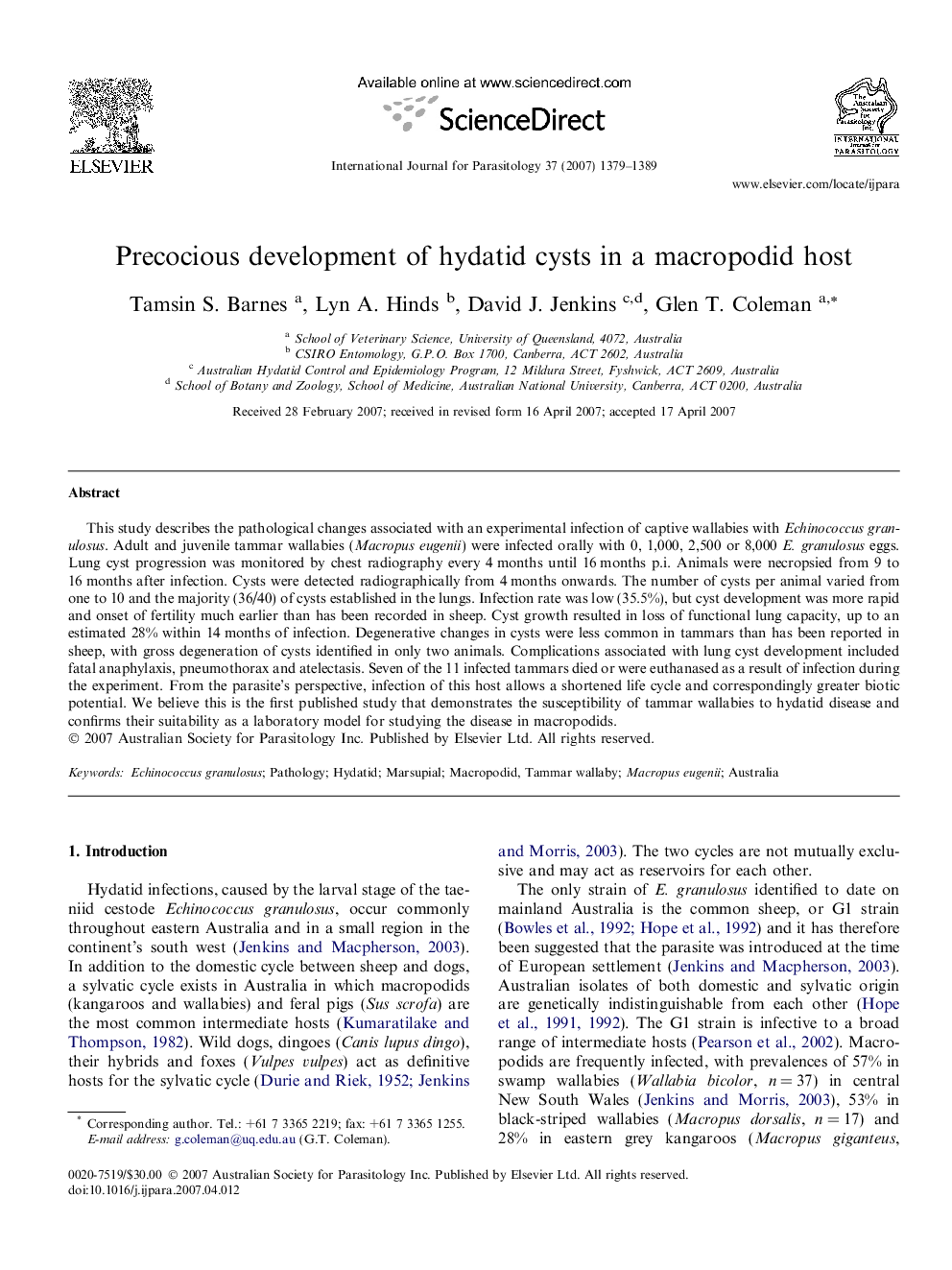| Article ID | Journal | Published Year | Pages | File Type |
|---|---|---|---|---|
| 10972766 | International Journal for Parasitology | 2007 | 11 Pages |
Abstract
This study describes the pathological changes associated with an experimental infection of captive wallabies with Echinococcus granulosus. Adult and juvenile tammar wallabies (Macropus eugenii) were infected orally with 0, 1,000, 2,500 or 8,000 E. granulosus eggs. Lung cyst progression was monitored by chest radiography every 4Â months until 16Â months p.i. Animals were necropsied from 9 to 16Â months after infection. Cysts were detected radiographically from 4Â months onwards. The number of cysts per animal varied from one to 10 and the majority (36/40) of cysts established in the lungs. Infection rate was low (35.5%), but cyst development was more rapid and onset of fertility much earlier than has been recorded in sheep. Cyst growth resulted in loss of functional lung capacity, up to an estimated 28% within 14Â months of infection. Degenerative changes in cysts were less common in tammars than has been reported in sheep, with gross degeneration of cysts identified in only two animals. Complications associated with lung cyst development included fatal anaphylaxis, pneumothorax and atelectasis. Seven of the 11 infected tammars died or were euthanased as a result of infection during the experiment. From the parasite's perspective, infection of this host allows a shortened life cycle and correspondingly greater biotic potential. We believe this is the first published study that demonstrates the susceptibility of tammar wallabies to hydatid disease and confirms their suitability as a laboratory model for studying the disease in macropodids.
Related Topics
Life Sciences
Immunology and Microbiology
Parasitology
Authors
Tamsin S. Barnes, Lyn A. Hinds, David J. Jenkins, Glen T. Coleman,
